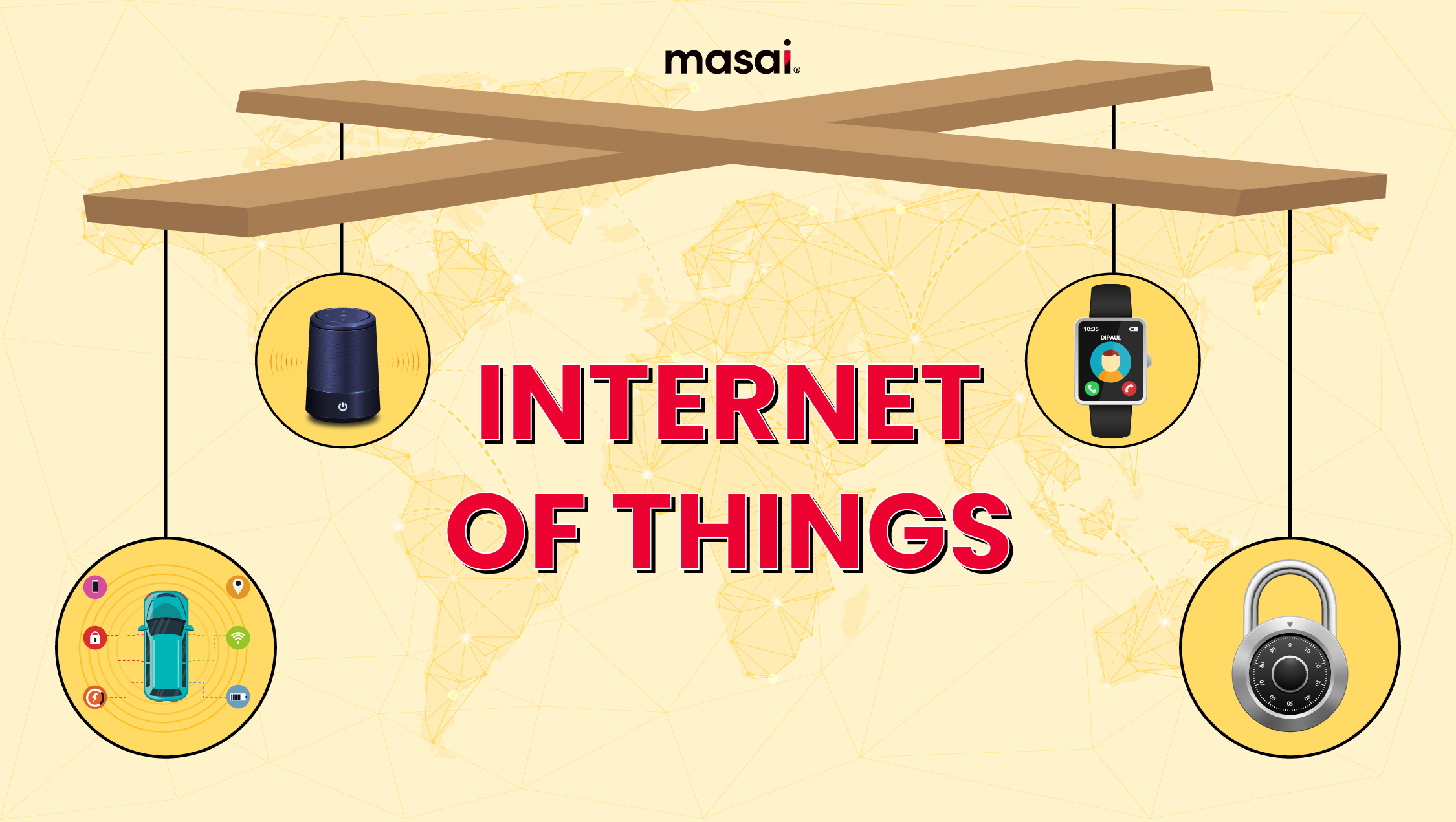IoT- An Introduction
The Internet of Things (IoT) is a broad phrase that describes the billions of physical objects or "things" connected to the Internet that can collect and exchange data with other systems and devices.

Preview- The Internet of Things is referred to as IoT. It describes the connectivity of physical items that are embedded with connectivity, software, and sensors that allow them to communicate and exchange data. Examples of such products are appliances and cars.
The Internet of Things (IoT) is a broad phrase that describes the billions of physical objects or "things" connected to the Internet that can collect and exchange data with other systems and devices.
From 2011 to 2015, Barcelona launched 22 programmes, covering 83 various projects spanning its urban systems, and selected 12 areas for intervention, including transportation, water, energy, waste, and open government. Following were the results:
Parking spaces: Barcelona has installed a sensor system that directs drivers to available parking spaces. The sensors, which are embedded beneath the asphalt, can detect available parking spaces and notify drivers. By directing drivers to available parking spaces, the programme has reduced emissions and congestion.
Street Lights: The street lights in Barcelona have been replaced with an LED-based lighting system and a sensor network.
This solution successfully addressed the issue of ineffective street lighting that is detrimental to the environment. With the help of sensors, the lighting system receives information about the environment (pollution, humidity, temperature, the presence of people, and noise).
A central unit in the street communicates with the lights, and this unit also manages other services such as electric vehicle charging stations, Wi-Fi, and fiber-optic cabling to the home. Sensors can adjust lighting based on the presence of people and the ambient temperature.
Waste Disposal: Barcelona residents use the smart waste disposal system to deposit their residential waste into smart bins. These intelligent bins use a vacuum to suck waste into underground storage. This reduces the odour of trash waiting to be collected as well as the noise pollution caused by collection vehicles.
It also allows the city to detect the amount of waste that comes from various locations and optimise waste collection, reducing both the resources and time required for this service. Waste incineration is later used to generate energy for heating systems.
Barcelona is the epitome of the transition toward the goal of becoming a smart city by implementing digital tools to involve its residents and give them the authority to start using digital devices on their own.
What has formed the backbone of such transformation? It is the Internet of Things (IoT). This article is just about that.
Origins
Kevin Ashton initially used the term "Internet of Things" or IoT in 1999. But the Internet of Things didn't really take off on a global scale until Gartner added it to its list of new emerging technologies in 2011. As of 2021, there were 21.7 billion active connected devices, of which more than 11.7 billion (or 54 per cent) were Internet of Things (IoT) devices. This indicates that there is more Internet of Things (IoT) devices than non-IoT devices worldwide.
What is the Internet of Things?
The Internet of Things (IoT) is a broad phrase that describes the billions of physical objects or "things" connected to the Internet that can collect and exchange data with other systems and devices.
IoT has been around since the 1990s, but recent developments in a variety of technologies have made it more useful, including:
- Access to reasonably priced and trustworthy sensors
- An increase in the number of cloud computing platforms available
- Improvements in artificial intelligence and machine learning.
IoT gadgets can be anything from simple industrial machines to modest, everyday domestic items for cooking. Each IoT component has a Unique Identifier (UID), and they are all capable of sending data on their own without the aid of people.
What are IoT devices?
IoT devices are hardware objects that collect and exchange data online, such as sensors, gadgets, appliances, and other machinery. They can be integrated into other IoT devices and are configured for specific uses. An IoT device in your car, for instance, may detect traffic up ahead and immediately notify the person you're about to meet of your imminent delay.
How do IoT devices work?
Although the purposes of various IoT devices vary, they all operate similarly. IoT devices are first and foremost tangible items that sense events occurring in the real world. They typically connect to a Dynamic Host Configuration Protocol server and have an integrated CPU, network adapter, and firmware. For it to operate over the network, an IP address is also necessary.
A software programme is used to configure and administer the majority of IoT devices. Using a smartphone app, for instance, to manage the lighting in your house. Some gadgets don't require external programmes because they include inbuilt web servers. For instance, the moment you enter a room, the lights turn on.
Why is the Internet of Things (IoT) so important?
IoT devices provide enormous volumes of data that may be examined to learn significant insights. These insights can help with decision-making, operational optimization, and the discovery of new business prospects.
With the help of IoT, robots can execute laborious jobs by themselves. Processes may be automated to save labor costs, decrease waste, and enhance service delivery for businesses. IoT provides insight into consumer transactions and lowers the cost of manufacturing and delivering goods.
Low-cost computers, big data, the cloud, analytics, and mobile technologies enable the sharing and collection of data by physical objects with a minimum of human interaction. Digital systems can record, monitor, and modify every interaction between linked entities in today's hyper-connected environment. The physical and digital worlds collide, yet they work together.
Benefits of IOT
These are some of the main advantages of IoT technology:
Technical Improvement: IoT technology plays a significant role in advancing and improving technologies. As an illustration, IoT enables manufacturers to gather information from numerous automotive sensors. In order to enhance their efficiency and design, the manufacturer studies them.
Better Data Gathering: Traditional data collecting has drawbacks and was created with passive usage in mind. IoT makes it possible to act immediately on data.
Enhanced Customer Engagement: By identifying issues and streamlining the process, IoT enables you to enhance the customer experience.
Minimized waste: Real-time information provided by IoT enables efficient resource management and decision-making. For instance, if a manufacturer discovers a problem with many automobile engines, he may watch the manufacturing schedule for those engines and fix the problem using the production line
Applications of IoT
Let's examine how IoT changes our lives as we review the Introduction to IoT. Several IoT applications are listed below:
Wearables
Wearables are electronic devices that a person wears to reliably transmit critical medical, biological, and exercise data to a database(often close to the skin).
Although the Apple Watch and Fitbit are iconic examples of wearable technology, other gadgets are also being created at the moment. We are moving towards a more connected lifestyle thanks to a range of devices, including smartwatches, VR, AR, smart coats, and many others.
The primary function of each device is to gather millions of data points, including your heart rate and the number of steps you take. It's also a thriving industry. In fact, by 2025, it's predicted that the wearables market will grow to a staggering $77 billion.
Wearable technology is likely to benefit the healthcare sector the most. Patients who wear these intelligent gadgets can monitor data such as blood pressure and body temperature, which is subsequently transmitted in real time to their medical staff.
Doctors can detect and treat patients more quickly and accurately if something seems awry. Thanks to the data gathered by a wearable device, the entire treatment procedure is now shorter because doctors no longer need to perform a battery of tests to diagnose an ailment or sickness.
Tesla
While Tesla is renowned for pioneering the electric vehicle industry, connectivity also plays a significant role in Tesla vehicles. All vehicles come equipped with connectivity services, including basic maps, navigation, and music streaming, as well as access to features that can only be accessed over Wi-Fi. Users can purchase Tesla's Premium Connectivity to gain access to all connectivity options via Wi-Fi and cellular data.
Drivers have the option of connecting to their vehicle using the Tesla app, which may be used to schedule servicing and roadside assistance, see the vehicle's charging history, and manage the climate.
LG ThinQ
With goods ranging from digital signs and air conditioning to solar and car parts, LG Electronics provides home appliances, consumer electronics, and B2B solutions. Machine learning is included in LG's ThinQ range of appliances, which can connect to Google Assistant and Amazon's Alexa with ease.
You can connect to devices via the LG ThinQ app, and connected devices will alert you when maintenance is required. Users can select from a variety of smart equipment, including refrigerators, ovens, and washers and dryers.
Samsung Electronics
Samsung may be known for its mobile devices, but the electronics business also sells TVs and smart home products. Users of Samsung goods may simply link their phones, tablets, and PCs thanks to seamless connectivity. Users can schedule cleaning with the Jet Cordless Stick Vacuum or receive alerts when the fridge door is left open by accessing Samsung's linked appliances using a mobile device.
Amazon Echo Voice Controller
The Amazon Echo Plus voice controller is used for a variety of tasks, including playing music, starting phone calls and messaging, setting alarms, answering queries, checking the weather, managing to-do lists, controlling smart home appliances, and more. Even when music is playing, the Amazon Echo's sound cancellation capability makes it easier to recognise your voice. All of this can be done with the application of human commands. The echo voice controller does all of this by integrating AI with IoT.
August Smart Lock
Another great Internet of Things (IoT) security gadget is the August Smart Lock. It enables users to find out remotely information on every visitor to their homes.
When the user approaches the door, the auto-unlock feature automatically unlocks the door and notifies them if their doors are correctly locked or not whenever they leave.
Unlimited Possibilities
Since the Internet of Things is still in its infancy, the projections for its future expansion are optimistic. We shall be connected in ways that are thought to be impossibly futuristic in the coming years. IoT and AI integration will open up new opportunities for inventive applications in a variety of sectors.
Conclusion
IoT is one of the most significant technologies, and it keeps developing as more companies see how linked gadgets may help them stay competitive. It can support us in enhancing both our personal and professional lives. With the help of this technology, data can be gathered and shared from a huge network of devices, opening the door to the development of automated systems that are more effective. Future IoT-based technologies will provide higher degrees of services and essentially alter how people live their daily lives.
FAQs
What is the purpose of IoT?
The basic goal of the Internet of Things is to establish a connected environment. The Internet of Things is an ecosystem in which everything is interconnected.
What is the role of data analytics in IoT?
IoT data analytics' actual goal is to transform enormous amounts of unstructured data from diverse devices and sensors throughout the heterogeneous Internet of Things ecosystem into meaningful and practical information that can be utilized to guide future data analysis and wise business decisions.

